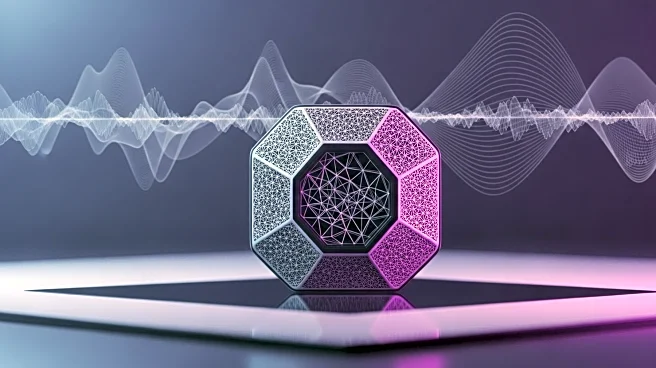What's Happening?
Scientists at the U.S. Department of Energy's Ames National Laboratory and Iowa State University have identified a 'quantum echo' in superconducting materials, a discovery that could significantly impact the development of quantum sensing and computing technologies. Superconductors, which conduct electricity without resistance, exhibit collective vibrations known as 'Higgs modes' during phase transitions. These modes are challenging to observe due to their brief existence and complex interactions with quasiparticles. Using advanced terahertz spectroscopy, the research team discovered a novel 'Higgs echo' in superconducting niobium materials, which are integral to quantum computing circuits. This echo results from interactions between Higgs modes and quasiparticles, producing unique signals. The team, led by scientist Jigang Wang, utilized precisely timed terahertz radiation pulses to observe and manipulate these echoes, potentially enabling new methods for quantum information storage and processing.
Why It's Important?
The discovery of the 'Higgs echo' in superconductors represents a significant advancement in understanding quantum behaviors, which are crucial for the development of next-generation quantum technologies. This breakthrough could lead to more efficient quantum computing and advanced quantum sensing technologies, offering new ways to encode, store, and retrieve quantum information. The ability to control quantum coherence in superconductors could revolutionize industries reliant on quantum computing, such as cryptography, materials science, and complex system simulations. The research, supported by the Superconducting Quantum Materials and Systems Center, underscores the potential for practical applications of quantum mechanics in technology, potentially leading to more powerful and efficient computational systems.
What's Next?
The research team plans to further explore the applications of the 'Higgs echo' in quantum computing and sensing technologies. By refining their techniques and understanding of these quantum echoes, they aim to develop practical methods for quantum information processing. This could involve collaborations with other research institutions and technology companies to integrate these findings into existing quantum computing frameworks. The ongoing research may also attract interest from industries looking to leverage quantum technologies for competitive advantages, potentially leading to new partnerships and funding opportunities.










